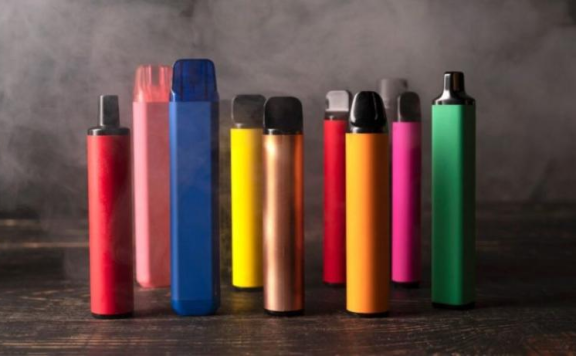What is China’s New Vaping Regulation?
When China’s State Council issued a new resolution on November 11th, it made quite a fuss across the country’s vaping industry. Chinese authorities decided from that date on, all current regulations on cigarettes will be extended to e-cigarettes.
“All the new tobacco products, including e-cigarettes, will be regulated in accordance with existing rules regarding conventional cigarettes.”
—State Council of the People’s Republic of China
The sharp shift in policy has perplexed flocks of vaping retailers, manufacturers and agencies in China, and raised concerns about the next episode. Would that trigger a nationwide reshuffle? The answer seems to be “very possibly” in view of what’s going on there. Meanwhile, another question has just followed on: is it likely to make waves in the global vape market?
From 2003 to 2021: Vapes in China Over the Past Two Decades
Although a large majority of vapers currently populate in North America and Europe, China has played a decisive role in the growth of global vaping industry. To be more exact, modern e-cigarettes were invented in China.
In 2003, a Chinese pharmacist, Hon Lik, made the first cigalike device to help himself quit smoking, which he feared would cause lung cancer as his father experienced. In terms of the shape and size, the device is a cigarette look-alike through and through. It quickly went viral in China after Hon started mass production and repeatedly stressed the “smoking cessation” effects in the ads. China was the first and biggest e-cigarette consumer market back then.
However, the situation has unfolded differently since the late 2000s. After vapes were exported overseas by Chinese firms, they got down unexpectedly well with the new markets. As the popularity of vaping soared in foreign countries, lots of local investors jumped into the game with both feet to compete with Chinese vaping products, and fared really well. In 2013, UK’s Imperial Tobacco even acquired Hon’s patents at $75m (£49m).
That’s how the cradle of vaping was gradually sidelined from the stage. The lights dimmed for over 10 years, until another vaping boom swept across the country very recently in 2018. Nevertheless, in spite of all these ups and downs in Chinese vaping industry, we shouldn’t neglect a fact, that is China has never really quitted the race. Over the two decades, China has been the biggest e-cigarette manufacturer and exporter all along.
Chinese Vape Market, A Rising Star
- Vaper Base & Retail Sales
According to Chinese Center for Disease Control and Prevention, in November 2019 China was home to about 10.35 million vapers, accounting for only 0.6% of smokers at that time. That actually suggests a huge untapped market with vast opportunities to explore.
In addition, the current e-cig retail sales in China is promising as well. According to the estimates by Chinese Electronic Cigarette Industry Committee, China’s domestic retail revenue of vapes rose by 30% from 2019 to 2020 to roughly 14.5 billion yuan.
- Considerable Export Figures
The committee also revealed data over Chinese e-cigarette exports, which far exceed the figure of domestic sales. The exports are estimated to top 49.4 billion yuan, with a 13% leap from 2019.
- Enormous Vape Manufacturing Capacity
Early in 2014, NY Times has reported that China “produces about 90% of the world’s cigarettes.” That’s the best proof of China’s amazing vape production capacity.
Leyi, a China-based foreign trade big data platform, further reinforced the fact in 2019. Its report said a total of 218 countries and regions purchased e-cigarette products from China that year, totaling about 76.59 billion yuan. Among others, America ranks highest by a total purchase value of 19.51 billion yuan, accounting for 25.48%.
How Would China’s New Regulation Affect the Global Landscape?
Considering the key role China plays throughout the global vape supply chain, the updated regulation could inevitably influence the markets worldwide.
The first impact is linked to the vape manufacturing. As soon as the new regulations took effect, more detailed and strict standards on e-cig manufacturing would fall in place. Chinese regulators also demanded all brands shall submit materials for registration before sales of any products, more or less like the FDA’s PMTA review process introduced last year. Given China’s standing as the biggest vape exporter, the reform would enhance the overall quality of vaping products on offer in the global market.
Secondly, that would further raise the bar for brands to enter the playing field. In China, fake vape has been one of the biggest problems in the vape industry. The largest brand, RELX, took huge efforts to sue counterfeits and other mainsream vape brands also were acting up against fakes. With increasingly strict policy, counterfeited vape manufacturers have nearly no chance to survive or to find other ways out that compliant with the policy, which means that when rules go tighter, smaller unregulated brands might find it more struggling to gain a foothold in the domestic market. Most of them would just end up being forced out of the game. While in the meantime, those Chinese vape beasts, such as Relx, MOTI, YOOZ, SMOORE, First Union and etc., would gain new momentums under the regulation instead, and rise to be world-class brands.
At last, it’s expected to see even higher vape exports from China. Chinese State Tobacco Monopoly Administration has introduced a ban on refillable vapes and restrictions on fruit-flavored vape liquid. In this context, Chinese vape market is very likely to continue to be dominated by closed-system disposable vapes. That would drive plenty of vape firms to go overseas seeking opportunities.







